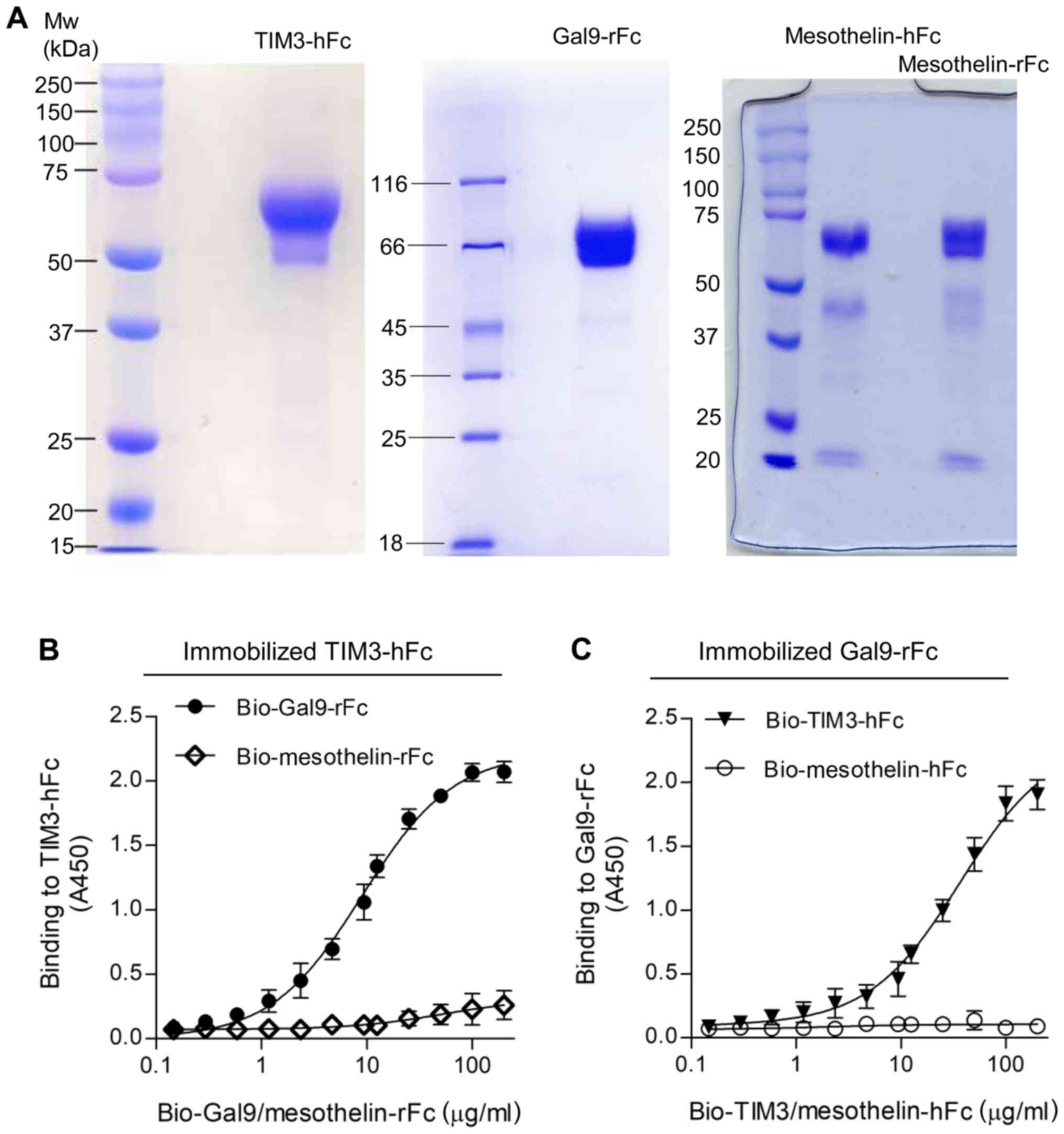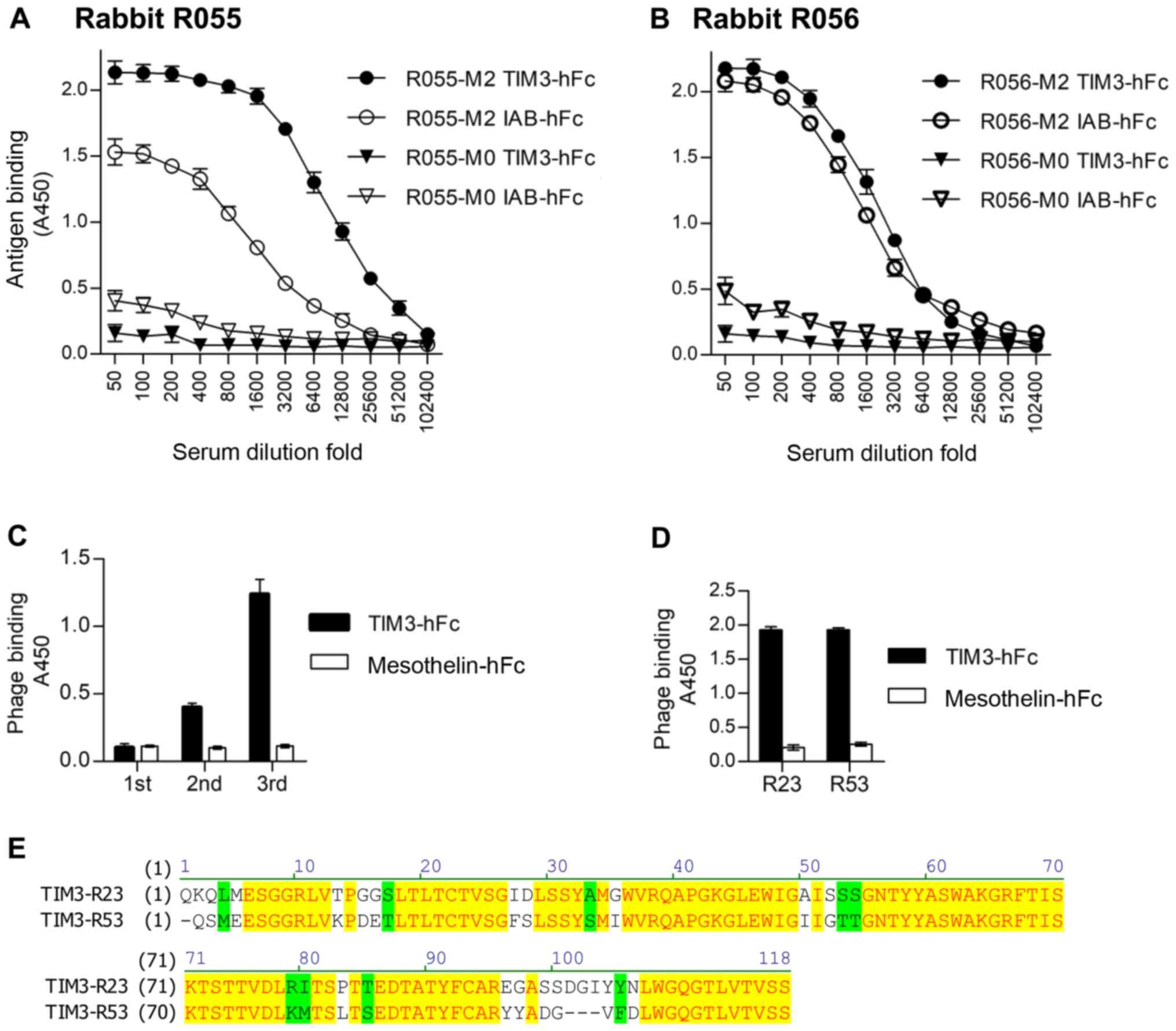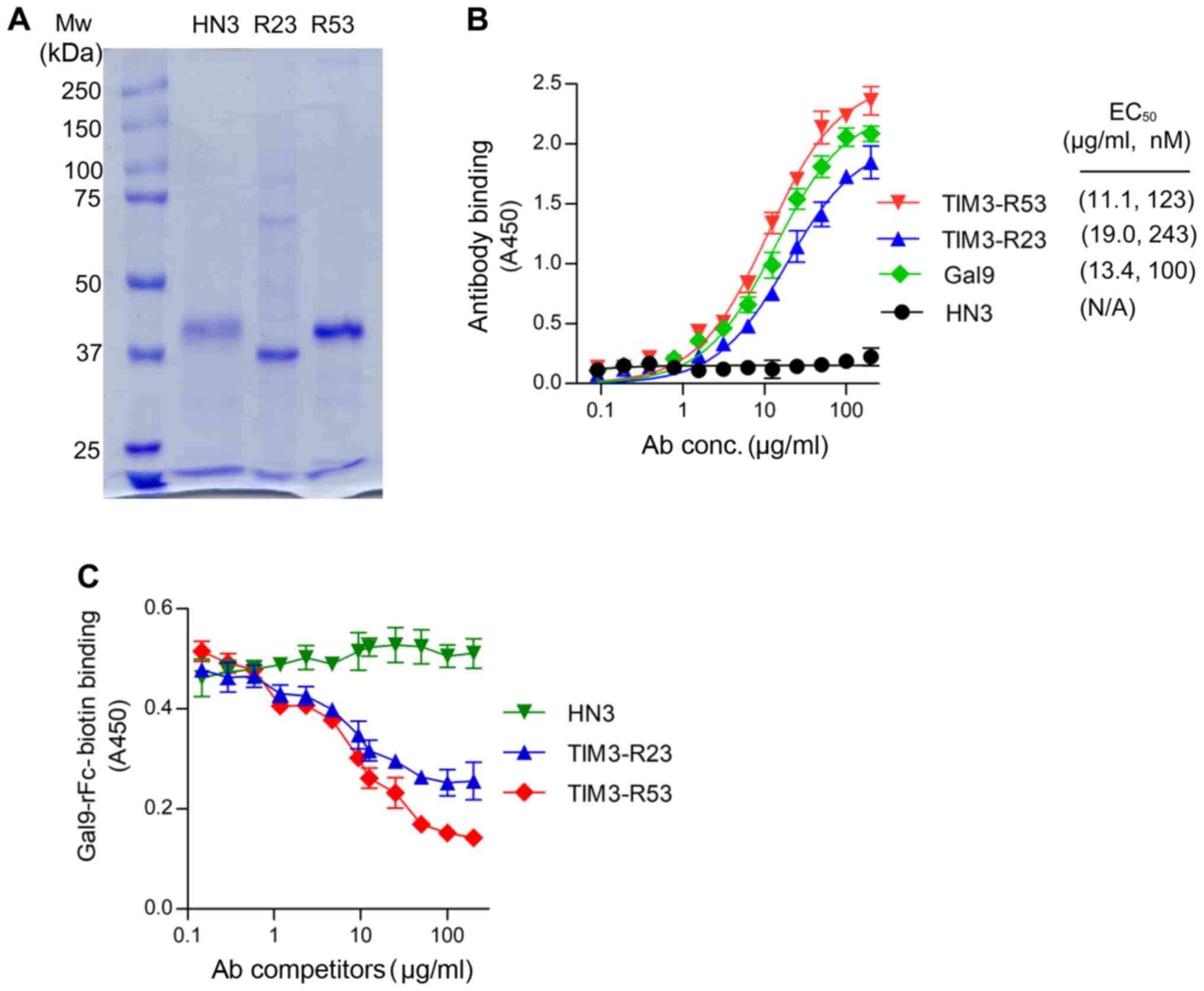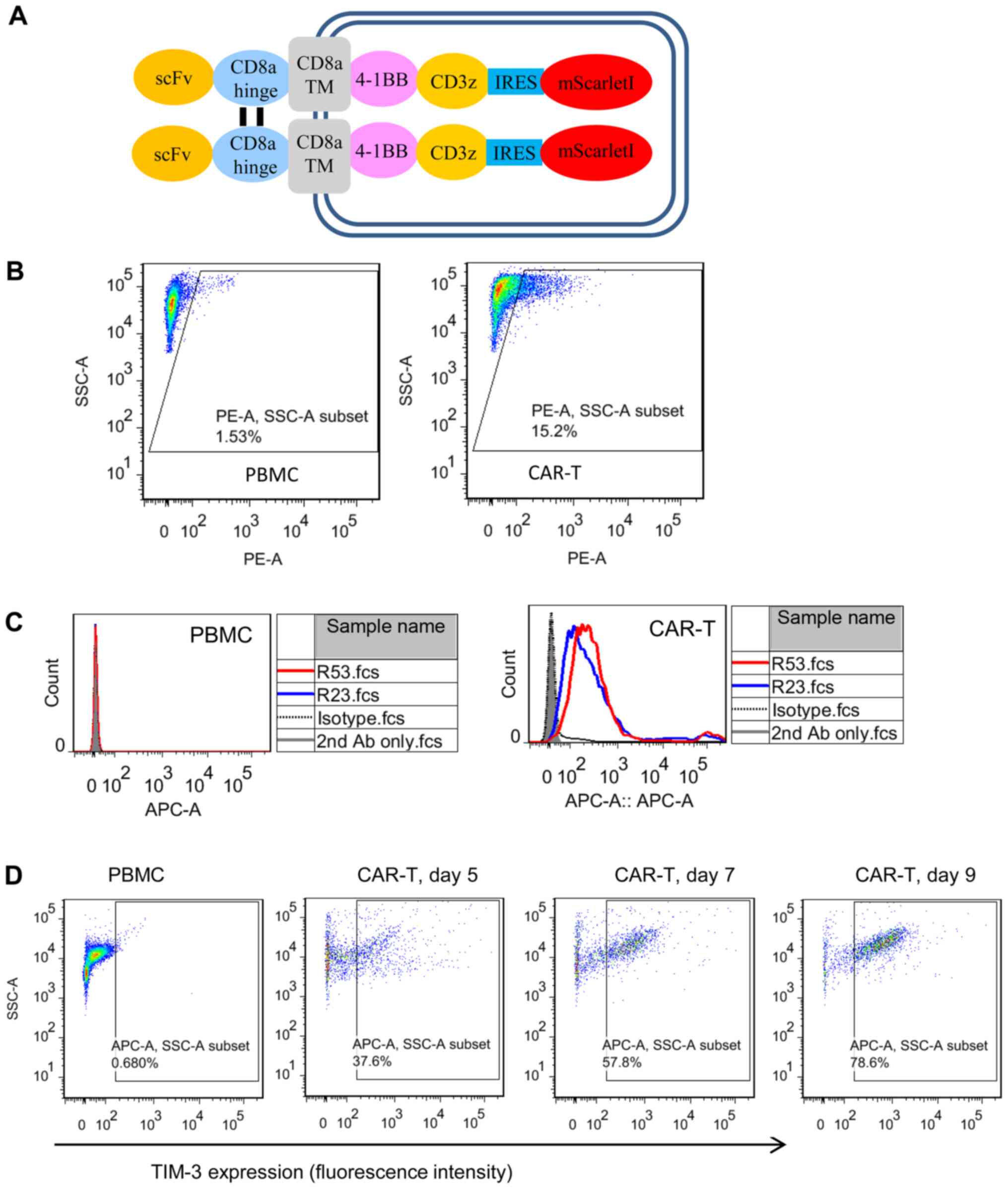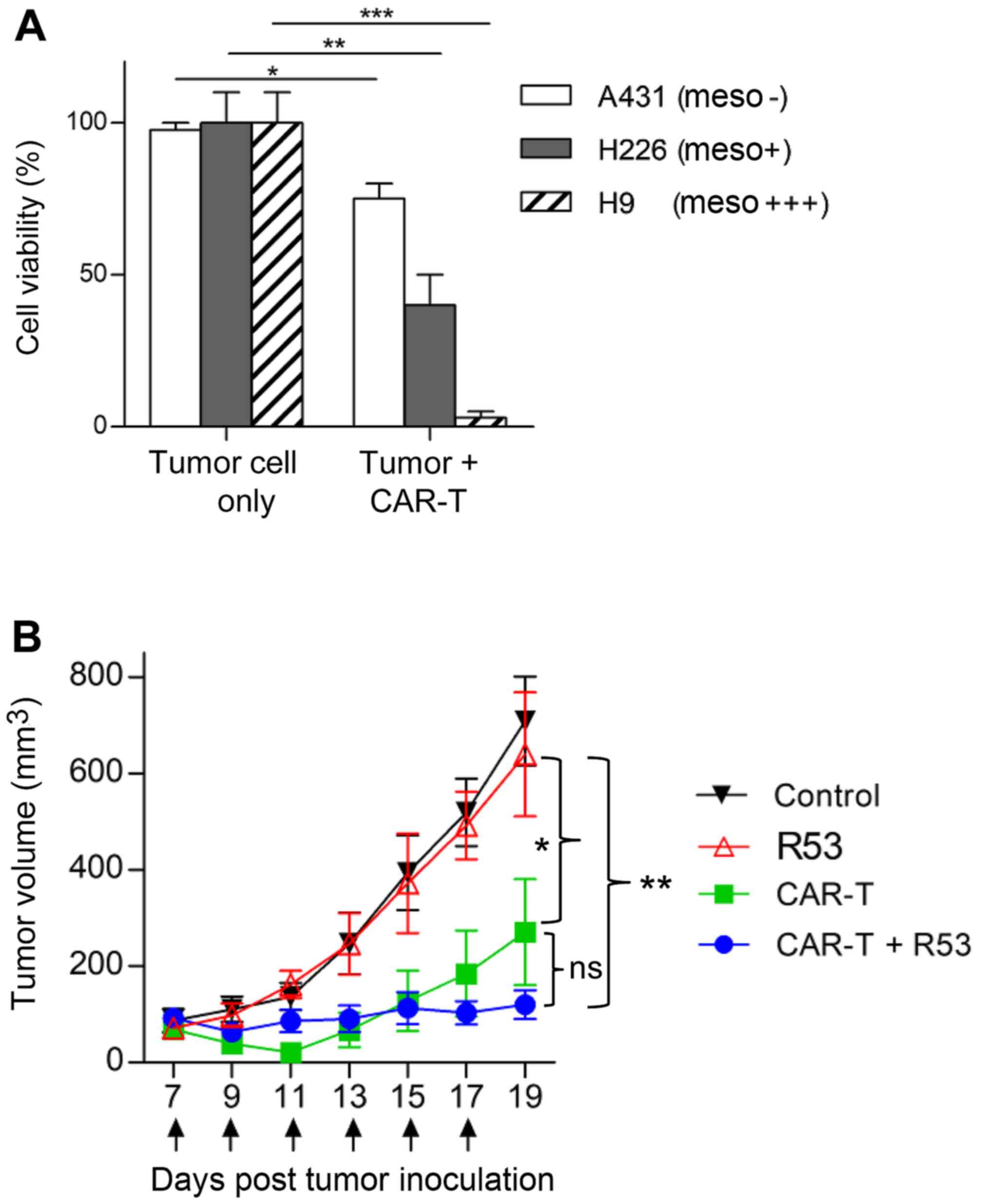|
1
|
Hamid O, Robert C, Ribas A, Hodi FS,
Walpole E, Daud A, Arance AS, Brown E, Hoeller C, Mortier L, et al:
Antitumour activity of pembrolizumab in advanced mucosal melanoma:
A post-hoc analysis of KEYNOTE-001, 002, 006. Br J Cancer.
119:670–674. 2018. View Article : Google Scholar : PubMed/NCBI
|
|
2
|
Garon EB, Rizvi NA, Hui R, Leighl N,
Balmanoukian AS, Eder JP, Patnaik A, Aggarwal C, Gubens M, Horn L,
et al: Pembrolizumab for the treatment of non-small-cell lung
cancer. N Engl J Med. 372:2018–2028. 2015. View Article : Google Scholar : PubMed/NCBI
|
|
3
|
Motzer RJ, Escudier B, McDermott DF,
George S, Hammers HJ, Srinivas S, Tykodi SS, Sosman JA, Procopio G,
Plimack ER, et al: Nivolumab versus everolimus in advanced
renal-cell carcinoma. N Engl J Med. 373:1803–1813. 2015. View Article : Google Scholar : PubMed/NCBI
|
|
4
|
Langer CJ, Gadgeel SM, Borghaei H,
Papadimitrakopoulou VA, Patnaik A, Powell SF, Gentzler RD, Martins
RG, Stevenson JP, Jalal SI, et al: Carboplatin and pemetrexed with
or without pembrolizumab for advanced, non-squamous non-small-cell
lung cancer: A randomised, phase 2 cohort of the open-label
KEYNOTE-021 study. Lancet Oncol. 17:1497–1508. 2016. View Article : Google Scholar : PubMed/NCBI
|
|
5
|
Mcintire JJ, Umetsu SE, Akbari O, Potter
M, Kuchroo VK, Barsh GS, Freeman GJ, Umetsu DT and Dekruyff RH:
Identification of Tapr (an airway hyperreactivity regulatory locus)
and the linked Tim gene family. Nat Immunol. 2:1109–1116. 2001.
View Article : Google Scholar : PubMed/NCBI
|
|
6
|
Zhu C, Anderson AC, Schubart A, Xiong H,
Imitola J, Khoury SJ, Zheng XX, Strom TB and Kuchroo VK: The Tim-3
ligand galectin-9 negatively regulates T helper type 1 immunity.
Nat Immunol. 6:1245–1252. 2005. View
Article : Google Scholar : PubMed/NCBI
|
|
7
|
Anderson AC, Anderson DE, Bregoli L,
Hastings WD, Kassam N, Lei C, Chandwaskar R, Karman J, Su EW,
Hirashima M, et al: Promotion of tissue inflammation by the immune
receptor Tim-3 expressed on innate immune cells. Science.
318:1141–1143. 2007. View Article : Google Scholar : PubMed/NCBI
|
|
8
|
Ndhlovu LC, Lopez-Vergès S, Barbour JD,
Jones RB, Jha AR, Long BR, Schoeffler EC, Fujita T, Nixon DF and
Lanier LL: Tim-3 marks human natural killer cell maturation and
suppresses cell-mediated cytotoxicity. Blood. 119:3734–3743. 2012.
View Article : Google Scholar : PubMed/NCBI
|
|
9
|
Phong BL, Avery L, Sumpter TL, Gorman JV,
Watkins SC, Colgan JD and Kane LP: Tim-3 enhances FcεRI-proximal
signaling to modulate mast cell activation. J Exp Med.
212:2289–2304. 2015. View Article : Google Scholar : PubMed/NCBI
|
|
10
|
Han G, Chen G, Shen B and Li Y: Tim-3: An
activation marker and activation limiter of innate immune cells.
Front Immunol. 4:4492013. View Article : Google Scholar : PubMed/NCBI
|
|
11
|
Sabatos-Peyton CA, Nevin J, Brock A,
Venable JD, Tan DJ, Kassam N, Xu F, Taraszka J, Wesemann L, Pertel
T, et al: Blockade of Tim-3 binding to phosphatidylserine and
CEACAM1 is a shared feature of anti-Tim-3 antibodies that have
functional efficacy. Oncoimmunology. 7:e13856902017. View Article : Google Scholar : PubMed/NCBI
|
|
12
|
Dolina JS, Braciale TJ and Hahn YS:
Liver-primed CD8+ T cells suppress antiviral adaptive immunity
through galectin-9-independent T-cell immunoglobulin and mucin 3
engagement of high-mobility group box 1 in mice. Hepatology.
59:1351–1365. 2014. View Article : Google Scholar : PubMed/NCBI
|
|
13
|
Markwick LJ, Riva A, Ryan JM, Cooksley H,
Palma E, Tranah TH, Manakkat Vijay GK, Vergis N, Thursz M, Evans A,
et al: Blockade of PD1 and TIM3 restores innate and adaptive
immunity in patients with acute alcoholic hepatitis.
Gastroenterology. 148:590–602.e10. 2015. View Article : Google Scholar : PubMed/NCBI
|
|
14
|
Khodabakhsh F, Behdani M, Rami A and
Kazemi-Lomedasht F: Single-domain antibodies or nanobodies: A class
of next-generation antibodies. Int Rev Immunol. 37:316–322. 2018.
View Article : Google Scholar : PubMed/NCBI
|
|
15
|
Wesolowski J, Alzogaray V, Reyelt J, Unger
M, Juarez K, Urrutia M, Cauerhff A, Danquah W, Rissiek B,
Scheuplein F, et al: Single domain antibodies: Promising
experimental and therapeutic tools in infection and immunity. Med
Microbiol Immunol. 198:157–174. 2009. View Article : Google Scholar : PubMed/NCBI
|
|
16
|
Elverdi T and Eskazan AE: Caplacizumab as
an emerging treatment option for acquired thrombotic
thrombocytopenic purpura. Drug Des Devel Ther. 13:1251–1258. 2019.
View Article : Google Scholar : PubMed/NCBI
|
|
17
|
Scully M, Cataland SR, Peyvandi F, Coppo
P, Knöbl P, Kremer Hovinga JA, Metjian A, de la Rubia J, Pavenski
K, Callewaert F, et al: Caplacizumab treatment for acquired
thrombotic thrombocytopenic purpura. N Engl J Med. 380:335–346.
2019. View Article : Google Scholar : PubMed/NCBI
|
|
18
|
Shinozaki N, Hashimoto R, Fukui K and
Uchiyama S: Efficient generation of single domain antibodies with
high affinities and enhanced thermal stabilities. Sci Rep.
7:57942017. View Article : Google Scholar : PubMed/NCBI
|
|
19
|
AVMA Panel on Euthanasia. American
Veterinary Medical Association, . 2000 Report of the AVMA panel on
euthanasia. J Am Vet Med Assoc. 218:669–696. 2001. View Article : Google Scholar : PubMed/NCBI
|
|
20
|
Feng M, Gao W, Wang R, Chen W, Man YG,
Figg WD, Wang XW, Dimitrov DS and Ho M: Therapeutically targeting
glypican-3 via a conformation-specific single-domain antibody in
hepatocellular carcinoma. Proc Natl Acad Sci USA. 110:E1083–E1091.
2013. View Article : Google Scholar : PubMed/NCBI
|
|
21
|
Zhang YF and Ho M: Humanization of rabbit
monoclonal antibodies via grafting combined Kabat/IMGT/Paratome
complementarity-determining regions: Rationale and examples. MAbs.
9:419–429. 2017. View Article : Google Scholar : PubMed/NCBI
|
|
22
|
Kaneko O, Gong L, Zhang J, Hansen JK,
Hassan R, Lee B and Ho M: A binding domain on mesothelin for
CA125/MUC16. J Biol Chem. 284:3739–3749. 2009. View Article : Google Scholar : PubMed/NCBI
|
|
23
|
Baghdadi M, Takeuchi S, Wada H and Seino
K: Blocking monoclonal antibodies of TIM proteins as orchestrators
of anti-tumor immune response. MAbs. 6:1124–1132. 2014. View Article : Google Scholar : PubMed/NCBI
|
|
24
|
Herrera-Camacho I, Anaya-Ruiz M,
Perez-Santos M, Millán- Pérez Peña L, Bandala C and Landeta G:
Cancer immunotherapy using anti-TIM3/PD-1 bispecific antibody: A
patent evaluation of EP3356411A1. Expert Opin Ther Pat. 29:587–593.
2019. View Article : Google Scholar : PubMed/NCBI
|
|
25
|
Liu JF, Wu L, Yang LL, Deng WW, Mao L, Wu
H, Zhang WF and Sun ZJ: Blockade of TIM3 relieves immunosuppression
through reducing regulatory T cells in head and neck cancer. J Exp
Clin Cancer Res. 37:442018. View Article : Google Scholar : PubMed/NCBI
|
|
26
|
Zhou G, Sprengers D, Boor PPC, Doukas M,
Schutz H, Mancham S, Pedroza-Gonzalez A, Polak WG, de Jonge J,
Gaspersz M, et al: Antibodies against immune checkpoint molecules
restore functions of tumor-infiltrating T cells in hepatocellular
carcinomas. Gastroenterology. 153:1107–1119.e10. 2017. View Article : Google Scholar : PubMed/NCBI
|
|
27
|
Harding JJ, Moreno V, Bang YJ, Hong MH,
Patnaik A, Trigo J, Szpurka AM, Yamamoto N, Doi T, Fu S, et al:
Blocking TIM-3 in treatment-refractory advanced solid tumors: A
phase Ia/b study of LY3321367 with or without an anti-PD-L1
antibody. Clin Cancer Res. 27:2168–2178. 2021. View Article : Google Scholar : PubMed/NCBI
|
|
28
|
Kim JE, Patel MA, Mangraviti A, Kim ES,
Theodros D, Velarde E, Liu A, Sankey EW, Tam A, Xu H, et al:
Combination therapy with Anti-PD-1, anti-TIM-3, and focal radiation
results in regression of murine gliomas. Clin Cancer Res.
23:124–136. 2017. View Article : Google Scholar : PubMed/NCBI
|
|
29
|
Ngiow SF, von Scheidt B, Akiba H, Yagita
H, Teng MW and Smyth MJ: Anti-TIM3 antibody promotes T cell
IFN-γ-mediated antitumor immunity and suppresses established
tumors. Cancer Res. 71:3540–3551. 2011. View Article : Google Scholar : PubMed/NCBI
|
|
30
|
Kurtulus S, Sakuishi K, Ngiow SF, Joller
N, Tan DJ, Teng MW, Smyth MJ, Kuchroo VK and Anderson AC: TIGIT
predominantly regulates the immune response via regulatory T cells.
J Clin Invest. 125:4053–4062. 2015. View Article : Google Scholar : PubMed/NCBI
|
|
31
|
Zhang D, Jiang F, Zaynagetdinov R, Huang
H, Sood VD, Wang H, Zhao X, Jenkins MH, Ji Q, Wang Y, et al:
Identification and characterization of M6903, an antagonistic
anti-TIM-3 monoclonal antibody. Oncoimmunology. 9:17449212020.
View Article : Google Scholar : PubMed/NCBI
|
|
32
|
Homayouni V, Ganjalikhani-Hakemi M, Rezaei
A, Khanahmad H, Behdani M and Lomedasht FK: Preparation and
characterization of a novel nanobody against T-cell immunoglobulin
and mucin-3 (TIM-3). Iran J Basic Med Sci. 19:1201–1208.
2016.PubMed/NCBI
|
|
33
|
Jiang Z, Jiang X, Chen S, Lai Y, Wei X, Li
B, Lin S, Wang S, Wu Q, Liang Q, et al: Anti-GPC3-CAR T cells
suppress the growth of tumor cells in patient-derived xenografts of
hepatocellular carcinoma. Front Immunol. 7:6902017. View Article : Google Scholar : PubMed/NCBI
|
|
34
|
Sakuishi K, Apetoh L, Sullivan JM, Blazar
BR, Kuchroo VK and Anderson AC: Targeting Tim-3 and PD-1 pathways
to reverse T cell exhaustion and restore anti-tumor immunity. J Exp
Med. 207:2187–2194. 2010. View Article : Google Scholar : PubMed/NCBI
|
|
35
|
Koyama S, Akbay EA, Li YY, Herter-Sprie
GS, Buczkowski KA, Richards WG, Gandhi L, Redig AJ, Rodig SJ,
Asahina H, et al: Adaptive resistance to therapeutic PD-1 blockade
is associated with upregulation of alternative immune checkpoints.
Nat Commun. 7:105012016. View Article : Google Scholar : PubMed/NCBI
|















